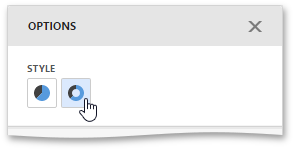Pies
The Pie dashboard item displays a series of pies or donuts that represent the contribution of each value to a total.
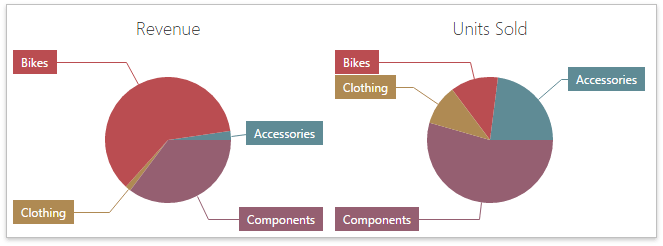
Providing Data
The Web Dashboard allows you to bind various dashboard items to data in a virtually uniform manner. To learn more, see the Bind Dashboard Items to Data topic.
The only difference is in the data sections that the required dashboard item has. This topic describes how to bind a Pie dashboard item to data.
Binding to Data in the Web Dashboard
The image below shows a sample Pie dashboard item that is bound to data.
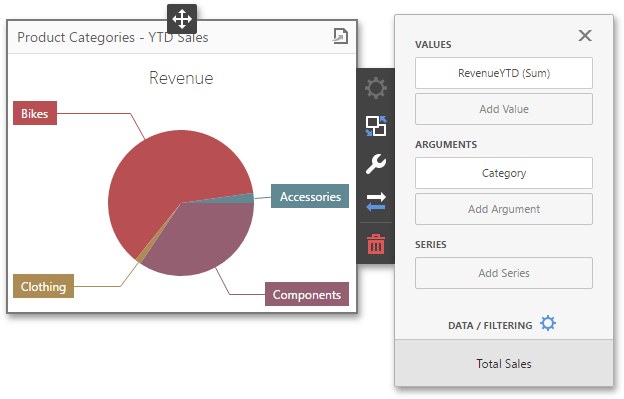
To bind the Pie dashboard item to data, click a placeholder contained in one of the available data sections and select the required data source field in the Binding section of the invoked data item menu.
The table below lists and describes the Pie’s data sections.
| Section | Processed as | Description |
|---|---|---|
| Values | Measure | Contains data items that define the share of pie segments. In case of negative measure values, Pie uses their absolute values. |
| Arguments | Dimension | Contains data items that provide values used to label pie segments. |
| Series | Dimension | Contains data items whose values are used to label pie charts. |
Interactivity
To enable interaction between the Pie and other dashboard items, you can use interactivity features like Master Filtering and Drill-Down.
Master Filtering
You can use the Pie dashboard item as a filter for other dashboard items. To learn more about filtering concepts common to all dashboard items, see the Master Filtering topic.
The Pie dashboard item supports filtering by arguments, series or points.
-
Filtering by arguments allows you to make other dashboard items display only data related to selected argument values by clicking a pie segment.
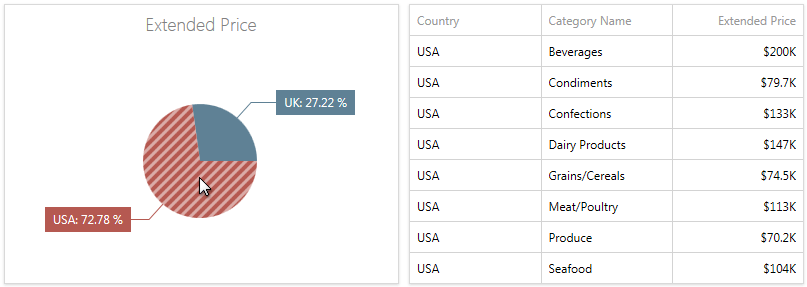
-
When filtering by series is enabled, you can click a pie to make other dashboard items display only data related to the selected pie.
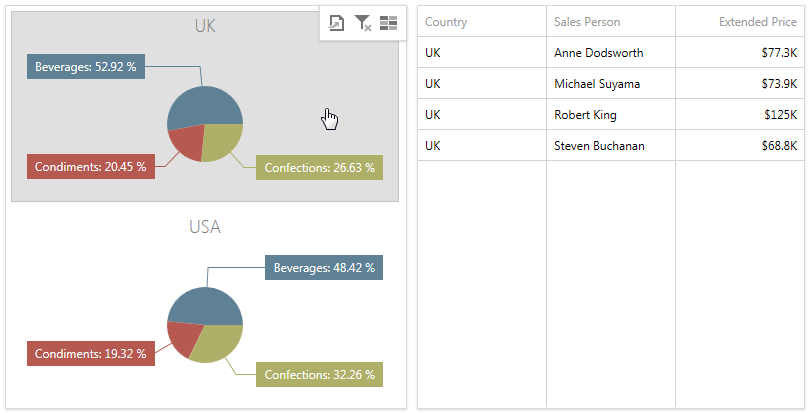
-
When filtering by points is enabled, you can click a single pie segment to make other dashboard items display only data related to the selected segment.
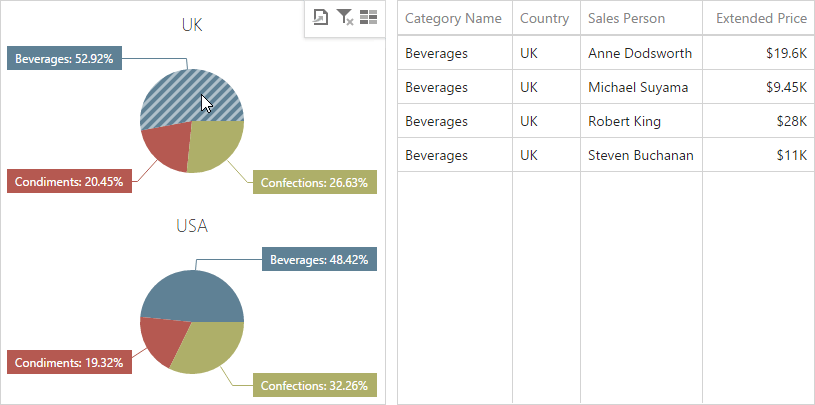
To configure filtering type, open the Pie’s Interactivity menu and select Arguments, Series or Points as a target dimension.
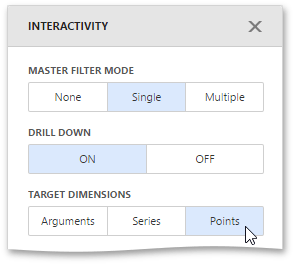
To reset filtering, use the Clear Master Filter button (the  icon) in the Pie’s caption.
icon) in the Pie’s caption.
Drill-Down
The drill-down capability allows you to change the detail level of data displayed in the Pie dashboard item. To learn more about drill-down concepts common to all dashboard items, see the Drill-Down topic.
The Pie supports drill-down on argument or series values.
-
To drill down on arguments, click a pie segment to view a detail diagram for the corresponding argument value.

Drill-down on arguments requires that the Arguments section contains several data items, from the least detailed to the most detailed item.
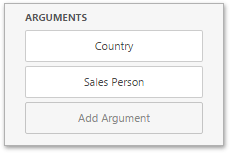
-
When drill-down on series is enabled, you can click a pie chart to view a detail diagram for the corresponding series value.
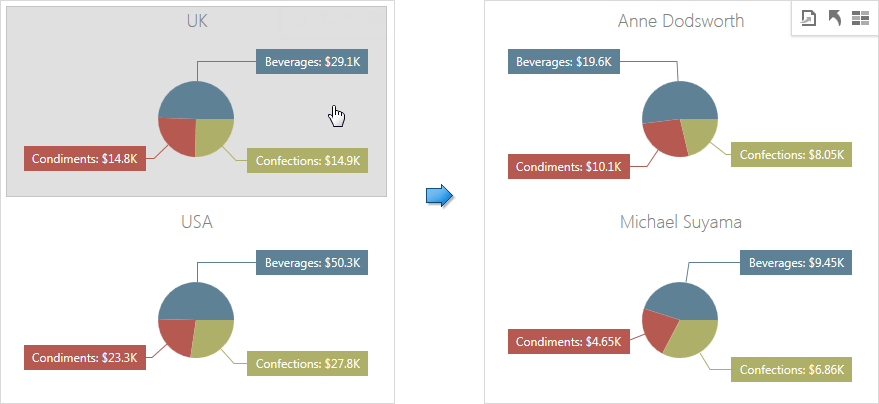
Drill-down on series requires that the Series section contains several data items, from the least detailed to the most detailed item.

To specify drill-down type, go to the Pie’s Interactivity menu and set Arguments or Series as the target dimension.
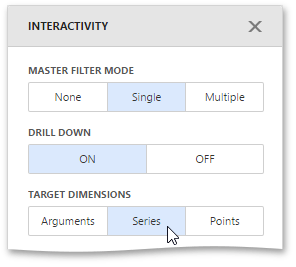
To return to the previous detail level, click the Drill Up button (the  icon) in the Pie’s caption.
icon) in the Pie’s caption.
Layout
The Pie dashboard item allows you to specify the number of columns or rows in which pies are arranged. For example, the following image show pies arranged into 3 columns.
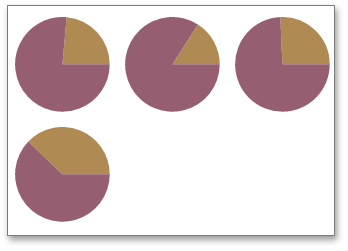
To control how cards are arranged, use the Layout section in the Pie’s Options menu.
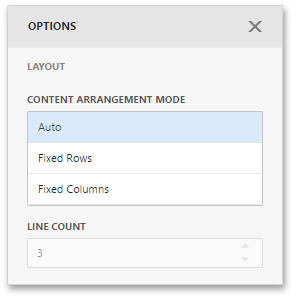
The following modes are available.
| Arrangement Mode | Description |
|---|---|
| Auto | Automatically resizes pies to fit within the dashboard item. |
| Fixed Rows | Allows you to arrange pies in a specific number of rows. |
| Fixed Columns | Allows you to specify the number of columns in which pies are arranged. |
To specify the number of rows / columns, use the Line Count field.
Labels
Pies display data labels that contain descriptions for pie segments, and provide tooltips with additional information.
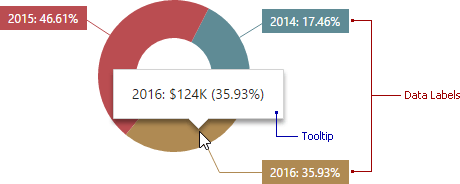
To configure data labels and tooltips, open the Pie’s Options menu and go to the Labels section.
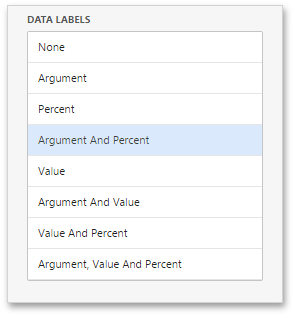

Here you can set argument, value, percent or their combinations as data labels or tooltips.
Style
The Pie dashboard item allows you to select whether diagrams should be painted as pies or donuts.
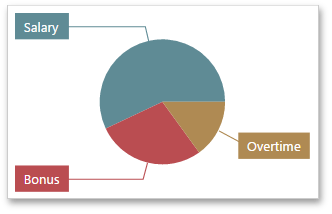

To select the diagram style, go to the Style section of the Pie’s Options menu and use the Pie or Donut buttons.
